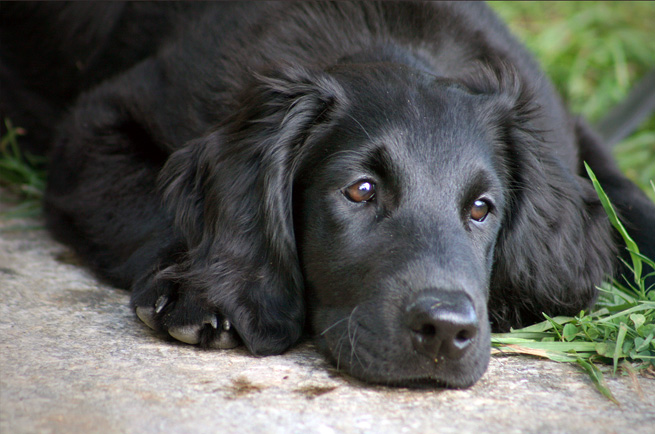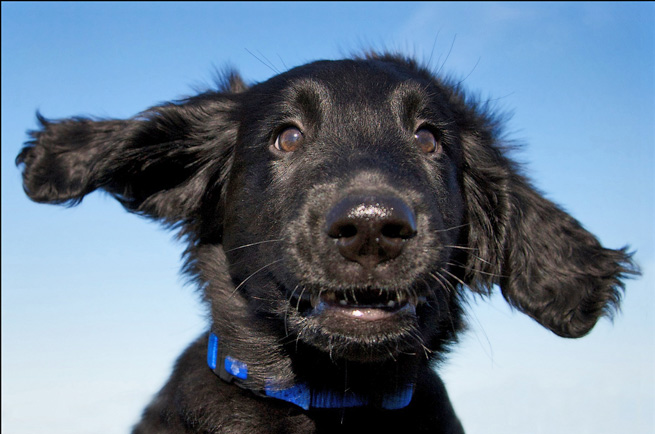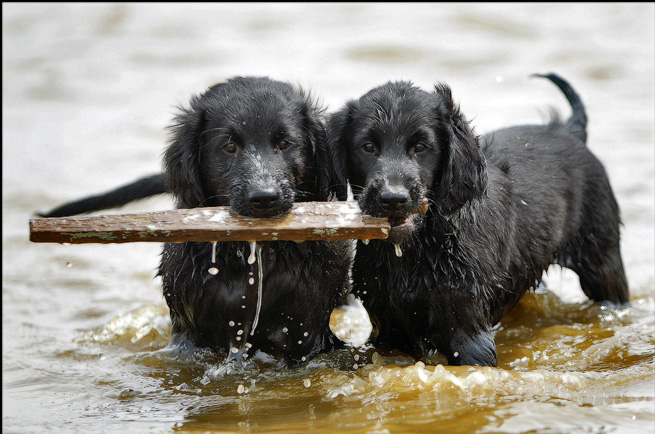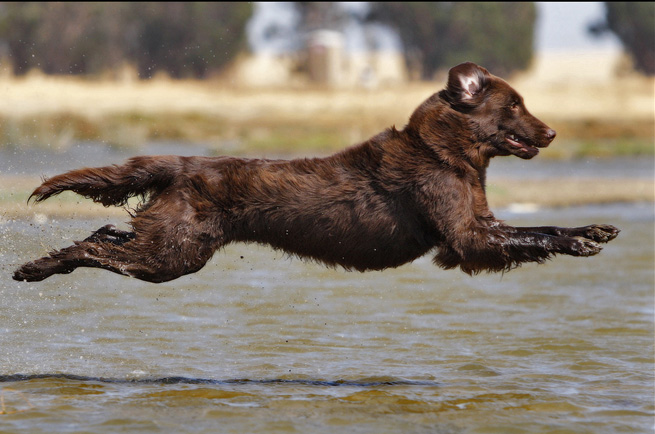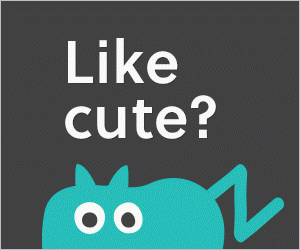Retriever—Flat Coated
The Flat-Coated Retriever is unsurprisingly named for it's gorgeous coat, dense and flat with a high shine. Their legs and tail are feathered, and when this active dog is running give an impression of power and athleticism. The Flat-Coated Retriever has a lean shape with a bright and intelligent face.
Other Names
Flat-coat
Country of Origin
Great Britain
Colour
Solid black or solid liver coloured.
Size
Large
Height / Weight
Height: 58 - 61cms at the withers and weigh 25 - 35kgs. Bitches measure 56 - 59cms and weigh 25 - 34kgs.
Health
Flat-Coated Retriever's tend to be healthy with few issues specific to their breed. Puppies should be bought from parents screened for hip dyplasia as there is a low incidence of it in the breed. Some skin issues can also occur like dermatitis and acute moist.
Life Span
10-14 years
Intelligence
Flat-coats are bright dogs who is quick to learn, they want to please you and love to join in with your activities. Sometimes they can become stubborn about doing things their own way so you will need to be firm and consistent in their management.
Exercise
Medium
Suitability (Children)
Medium
Feeding
Flat-Coated Retriever are good eaters, not fussy and do not require any special diet so are easy to feed. They should not be overfed as this may lead to them being overweight, Flat-coats are not intended to be bulky dogs but will need to eat enough to maintain their active lifestyle.
Feeding Cost
$15–$20 p/w
Other Cost
These are normally fit healthy dogs with low veterinary expenses.
Excercise
The Flat-Coated Retriever is a working dog at heart who is capable of travelling long distances but can be satisfied with moderate exercise. They love to join in with your activities but you should keep an eye on them in the first year of growth to prevent them developing bone and joint problems. Flat-Coated Retriever's love water and are natural swimmers who will enjoy the opportunity to play and swim, just make sure you keep an eye on them in the water!
Hair Shed
Moderate
Ailments
Flat-Coated Retriever's tend to be healthy with few issues specific to their breed. Puppies should be bought from parents screened for hip dyplasia as there is a low incidence of it in the breed. Some skin issues can also occur like dermatitis and acute moist.
Grooming
It is important to brush your Flat-Coat daily to maintain their coats, especially in the feathers which can accumulate all sorts of mess! The feathers on the feet need to be checked for dried mud especially. Plus the eyes, ears and teeth of the Flat-Coated Retriever will need to be checked and cleaned regularly.
Grooming Frequency
Daily
Trimming
None
Retriever breeds were originally bred in the early 19th century to pick up shot game when hunting. The Flat-Coated Retriever arose from the Lesser Newfoundland, beginning as a land retriever before their love and competence in water lead them to also be a prized water retriever by their gamekeepers. As well as retrieving, Flat-Coats can flush game from cover and hunt in upland areas. This breed is believed to have been established by Mr. J Hull, who began in 1864 when they were used on estates all over Great Britain. Unfortunately for this lovely breed in the 20th century they faced a decline, especially after the second world war, they were re-established in the mid 1960s but demand for them is still low. This has worked to the advantage of the breed in some ways because they have retained their working ability without being commercially exploited for their skills and nature.
comments powered by Disqus

